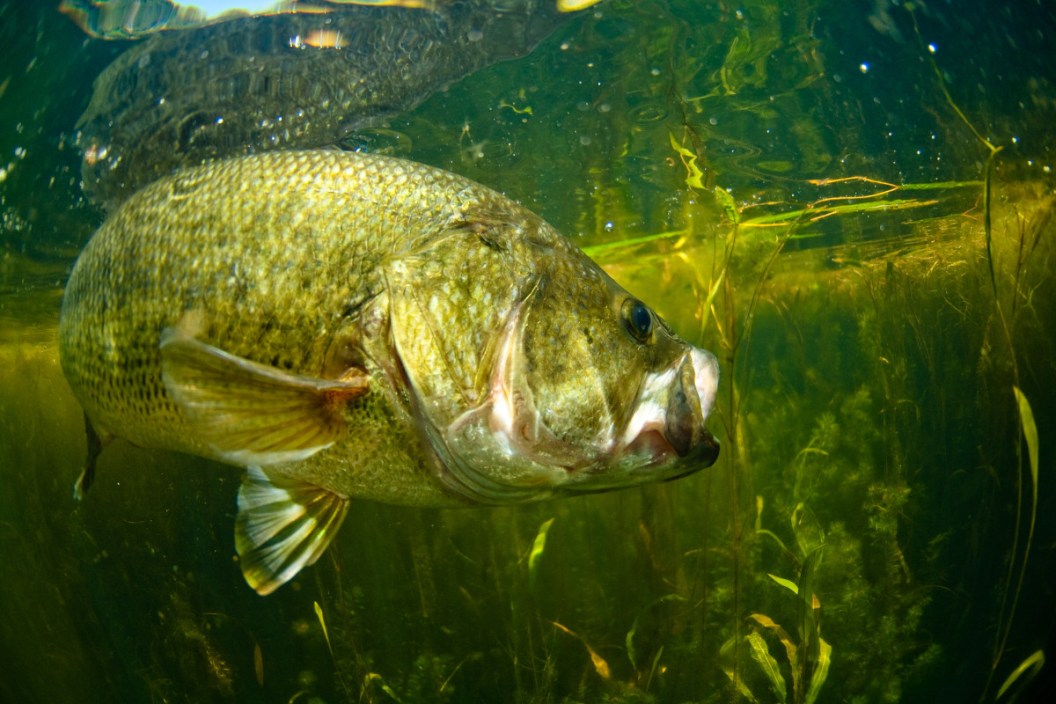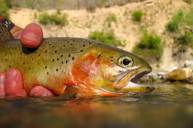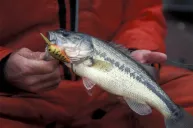Here are a few indicators of fishing success that you should notice before you ever take a cast.
Indicators of fishing success come in many forms and it usually starts with your own attitude. We've all had moments on the way to the lake, river, or stream when we really felt like it wasn't going to be the best outing, but were surprised by the success we had upon arriving.
This is to say that some indicator may have been missed, and if we hadn't gone through with it, we might have missed out on a good day fishing. It's not that we should push ourselves to fish under difficult conditions, just that we have ways of deciding before we go that might tell the tale.
Fishing and hunting both have ways of giving us reasons to have a good attitude about it before we ever leave, and even ways of making the most of it under more difficult circumstances, like bass fishing during a cold front. Chances are that as long as the conditions aren't dangerous, we're giving it a go, we all just want to know that it's worth it.
Tides
Generally speaking, one hour before and one hour after high tides, and one hour before and one hour after low tides can be great times to be out in the surf casting.
During the Rise and Set of the Moon
Fishing the moon phases has always been a good indicator of success. A full or new moon tend to be the best times, but it's still subjective.
Sunrise and Sunset
Sure, this one seems altogether obvious, but it bears repeating since we've all had success at these times. That means it's a time you shouldn't miss out on if possible.
Wind Direction
Is there any question about what wind direction can do to your fishing success? Western winds and many times those from a southerly direction have always had more success than those from the east or the north. Remember that old saying: "winds from the west, fish bite the best, winds from the east, fish bite the least."
Barometer On the Rise
We should all know how to fish a cold front by now, but when the barometer is heading towards a steady period around 30, then it's time to go fishing. The best anglers in the world are always watching barometric pressure and they know how to adjust accordingly.
During a Hatch
https://www.youtube.com/watch?v=sq7YNf7JG7U
When the fish's food is on the move then we should be as well: towards our favorite fishing spot. Keep an eye on the surface during these times. Fish surfacing to pluck insects off the surface are a dead giveaway on where to cast next. Fish that are actively feeding tend to show themselves in various ways, even under the water.
Still Water
When a high pressure system is in and the wind dies down, we have have to be more stealthy, but that's one of our favorite parts of fishing. Still waters on calm summer mornings can be one of the best times to break out the topwaters.
Obvious Mud Line
On larger waters such as the Great Lakes, having the turbid and muddier water gets closer and closer to the shoreline can mean the best of times for trolling in close. In other instances, it can mean getting on big bass.
The Shadows
This can be about the time of day and it can be about areas where the fish care to reside in a body of water. Areas that are constantly in the shadows have a better chance to hold fish in any conditions. You'll want to keep an out for these on warmer days when the fish are seeking relief from the summer heat.
Precipitation
A light rain is excellent fishing weather, especially in warm weather; if it blurs the surface, making it harder for the fish to see you all the better. The onset of rain can also trigger a fish feeding frenzy that may be short-lived. Take advantage while you can!
Overcast Skies
Since there's not always a dock, overhanging branches, or other forms of shade, having a good dose of cloud cover can be the difference between a good day on the water and frustration. Just like precipitation, clouds rolling in can change a fish's attitudes on feeding in a hurry.
Change in Water Level
This can be as simple as a creek that was flooded now being back to normal and a reservoir that is in a low-water period. When reservoir water levels drop during the drier months of the year, focus your fishing on creek channels and like structure.
Water Releases
Frequent water fluctuations produce an unending conveyer belt of changes in temperature and forage for the fish that live below a dam. Generally, when the water behind to rise the fish get their feed bags on.
Location, location, location
True of fishing in any season, it behooves the angler to know the spot where they plan to drop bait. Honestly, we may dismiss it at times, but the local and state DNR is usually kept quite up to date on all the recent conditions and fishing (and hunting) activity.
Higher water, particularly in the early season usually brings with it a lot of turbidity and difficult to fish conditions. While knowing how to fish an area is certainly vital, it's equally important to know where to fish in any given body of water.
In most instances, the stealthy angler will catch more fish than the one who is just excited to get a few casts in. This is true before the first cast is ever taken since fish - even fish on larger bodies of water - have an instinct that alerts them to our presence before we even know that they are gone.
Always consider things like water temperature and oxygen levels in any body of water that you plan to fish to give yourself a great head start before you ever reach your favorite fishing spot.
Please check out my book "The Hunter's Way" from HarperCollins. Be sure to follow my webpage, or on Facebook and YouTube. Go to Rack Hub and use the coupon code Craiger for a new way to display those antler sheds!
NEXT: 10 FLIES FOR TROUT WORTH TRYING OUT




